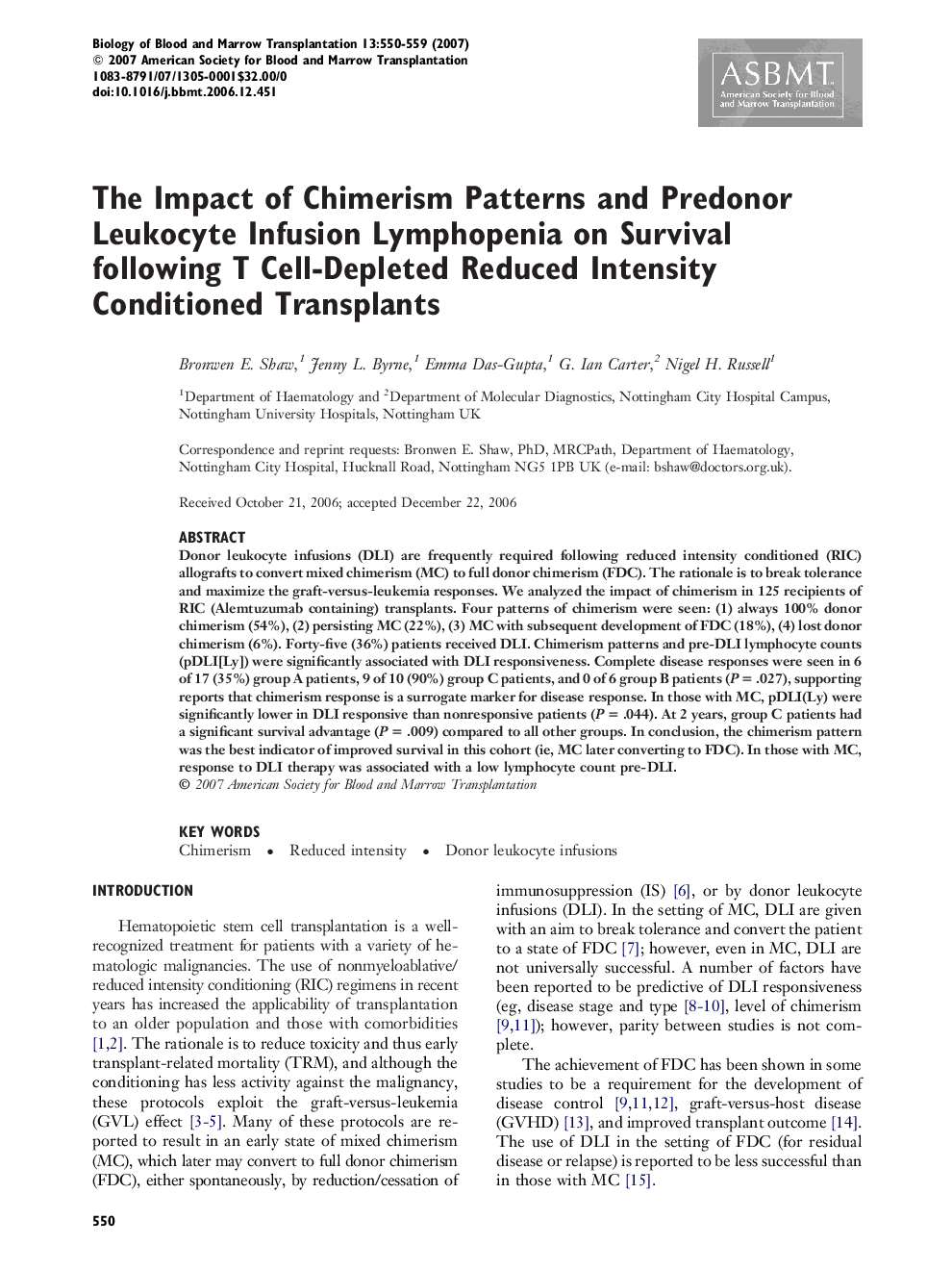| Article ID | Journal | Published Year | Pages | File Type |
|---|---|---|---|---|
| 2104912 | Biology of Blood and Marrow Transplantation | 2007 | 10 Pages |
Donor leukocyte infusions (DLI) are frequently required following reduced intensity conditioned (RIC) allografts to convert mixed chimerism (MC) to full donor chimerism (FDC). The rationale is to break tolerance and maximize the graft-versus-leukemia responses. We analyzed the impact of chimerism in 125 recipients of RIC (Alemtuzumab containing) transplants. Four patterns of chimerism were seen: (1) always 100% donor chimerism (54%), (2) persisting MC (22%), (3) MC with subsequent development of FDC (18%), (4) lost donor chimerism (6%). Forty-five (36%) patients received DLI. Chimerism patterns and pre-DLI lymphocyte counts (pDLI[Ly]) were significantly associated with DLI responsiveness. Complete disease responses were seen in 6 of 17 (35%) group A patients, 9 of 10 (90%) group C patients, and 0 of 6 group B patients (P = .027), supporting reports that chimerism response is a surrogate marker for disease response. In those with MC, pDLI(Ly) were significantly lower in DLI responsive than nonresponsive patients (P = .044). At 2 years, group C patients had a significant survival advantage (P = .009) compared to all other groups. In conclusion, the chimerism pattern was the best indicator of improved survival in this cohort (ie, MC later converting to FDC). In those with MC, response to DLI therapy was associated with a low lymphocyte count pre-DLI.
